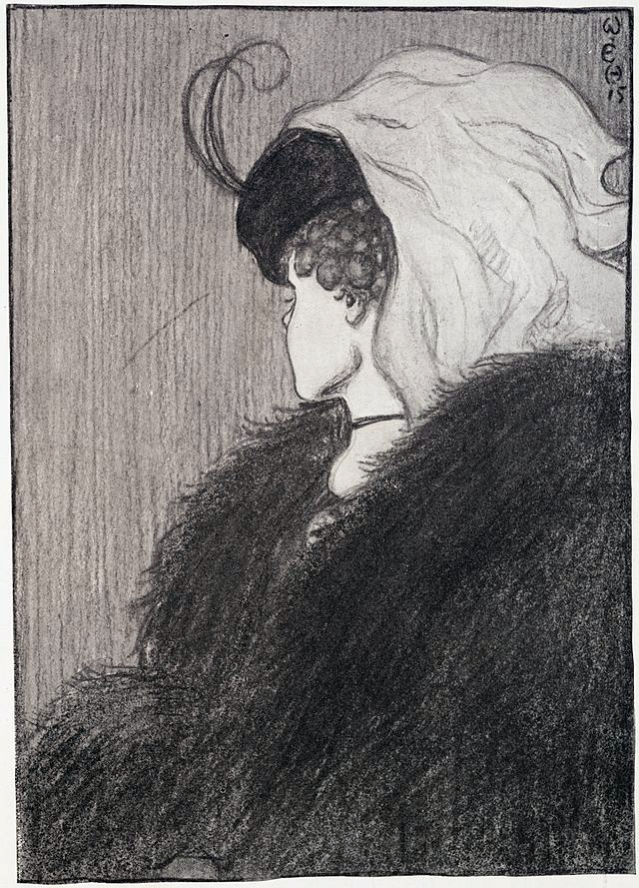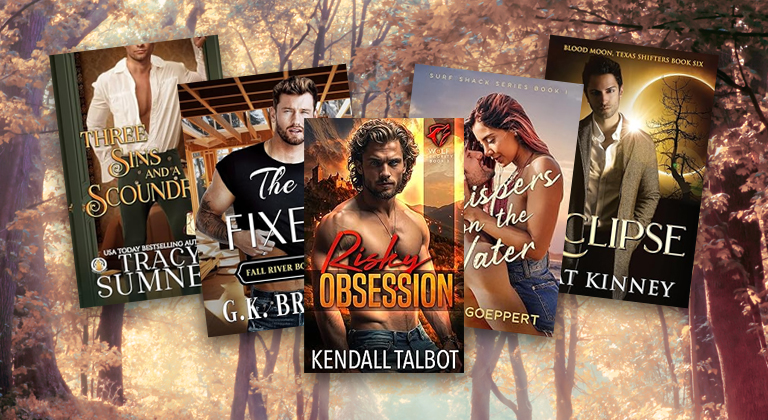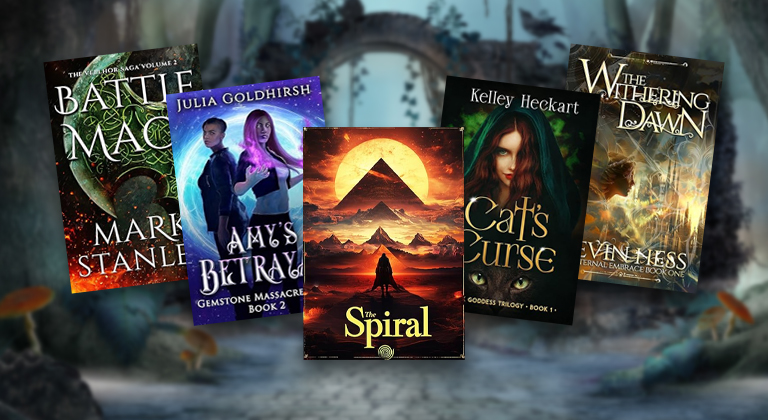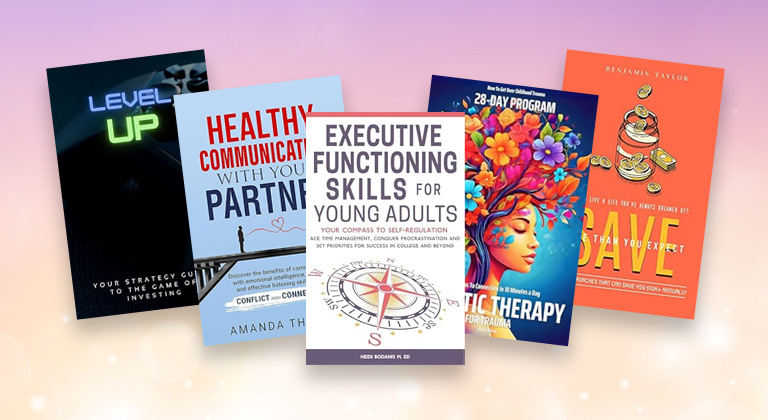Defending First-Person POV
Many authors are so used to writing from one particular point of view (POV) that they never give any consideration to switching things up. But while there is something to be said for writing in the style you’re most comfortable in, limiting yourself means limiting your ability to tell your story in the most effective way possible – so it’s worth understanding the merits of alternative styles. For example, if you always write stories in third-person POV, then you may not be aware of some of the benefits to writing in first-person. Describing things through your character’s eyes can be an incredibly powerful narrative technique.
The more time I’ve spent editing and reviewing other author’s books, the more I’ve come to differentiate the storytelling aspect of a novel, and the writing part of it. The story is what grabs people – hooks them into the lives and fortunes of your characters. The writing is merely how you convey that story to your readers. Using the first-person perspective when you write can therefore be a surprisingly versatile technique to tell your story; and I’m here today to launch a defense of it.
Wait, is First-Person POV actually under attack?
Just like there isn’t really a ‘War on Christmas’, there arguably isn’t an ‘attack’ of using first-person perspective to tell your stories. Plenty of writers do it.
I will say, however, that I’ve encountered a lot of authors who wrote their stories in third person perspective (“he did that,” and “she went there”) and when I suggested rewriting the events through the eyes of a single character, they were very hesitant.
In fact, I’ve been surprised at the number of authors who’ve taken a step back from first-person perspective writing, and seem to view it as inferior to the third person perspective, or, at the very least – ‘not right for them.’ I think there are a variety of reasons for this, and a variety of reasons why people might argue that third-person perspective is a ‘better’ form of writing:
It’s what they’re used to.
Undeniably, the majority of the books that I love – old James Bond adventures, and the stories of The Saint – use third person perspective. Since those books drove me to want to be a writer in the first place, it’s probably not surprising that my first instinct would be to use the same style of writing as those authors did. It’s often so instinctual that many authors don’t even question why they’d write from any other perspective. Many of the books we grew up with – from Harry Potter to Jack Reacher – were written in third-person perspective and it’s familiar and comforting to us to both read in, and write from.
It’s a more flexible perspective.
Writing from the third person perspective is basically like playing a giant game of The Sims with your characters. You can zoom up and look out over your entire story arc, and choose to then zoom in and watch the interaction between these two characters, and then disappear halfway across the world and use the next scene to write about what the bad guy is doing. It’s basically the ‘voice of God’ and for complex stories with a lot of characters, seems to offer infinite flexibility in how you tell a story. The inherent limitation of writing from the first person perspective is that you only get to observe the story through their eyes; and so much else goes on that you simply haven’t given yourself the ability to write about.
It’s from the outside looking in.
Some of the best twists-in-the-tale of a story come when a character becomes aware of something the reader already knew – giving a comforting payoff to that part of the story arc. With the third person perspective, you can visit many different characters, and write about what they do, and say, and experience – and in doing so, equip the reader with knowledge that the other characters don’t have themselves. For example, in the James Bond tale From Russia With Love, 007 and M might have suspected the Russians had laid a trap for them in Istanbul, but only the reader knew the truth; because they’d also read scenes featuring the villainous Rosa Kleb and the beautiful Tatania Romanova. By writing in the first-person perspective, you automatically cut yourself off from being able to do that; and readers are only able to learn things when the character they’re reading from the perspective of discovers them.
I think these are all undeniable examples of where the third-person perspective style of writing has more flexibility, and I think it’s why it tends to be the style of writing most commonly used in thrillers, and adventure tales, and other types of stories that involve complex events happening through the actions of a varied cast of characters.
However, for me, one of the most common traps I see writers fall into with the third-person perspective style of writing is precisely that. Because they’re like the ‘eye of God’ drifting above the story as if you’re playing a game of The Sims, it’s sometimes a little confusing when you go from observing the actions of one character, and then slip to hovering over another and watching them, instead. There needs to be a smooth transition – but because a lot of writers are so engrossed in their story, they don’t take a moment to make that differentiation; and it can be a jarring point in the paragraph when you have to suddenly stop and think: “Oh, we’re reading about this guy, now.”
I think one of the other dangers of the third-person perspective style of writing is that you automatically create an additional barrier between your reader and the character, because you’re forcing your readers to observe them externally. This makes it more difficult to create an emotional ‘hook’ so your readers actually care about what happens to the character, and the choices that character makes.
Likewise, there’s a barrier between the actions of the character, and their motivations in taking those actions. From the third-person perspective, you describe what a character does (she puts her sneakers in the fridge, for example) but unless you explain it, you don’t understand why she does it. This can sometimes be a great use of Hemingway’s ‘tip of the iceberg‘ writing technique; but conversely can lead readers to coming up with different interpretations for a character’s actions (like, I might read about a woman putting sneakers in the fridge and think she’s a lunatic. My wife, who used to run cross-country, would know that she’s doing it to make her sneakers less smelly.)
That’s a dangerous tightrope to walk, and I speak from personal experience when I say that it can lead to misunderstandings which make people dislike your main character (my early romances were written in the third-person, and when my heroine decided to run away from her hero, a lot of readers thought she was horrible for doing so, even though she was justified in doing so in my own head. I’d just failed to communicate the motivations which might have justified her actions to the readers.
Why choose the first person perspective?
I first made the switch from third-person perspective to first-person perspective after doing a lot of reading in my genre; and realizing that the majority of the romance writers I really enjoyed were writing from the first-person perspective, often from the heroine’s viewpoint for one chapter, and then the hero’s viewpoint for the next chapter.
I wrote my subsequent romance novel in that style of storytelling – and boom. It wasn’t an instant hit, but there was such a dramatic improvement in the performance of this book over my others that I realized I should have been thinking about doing this a lot earlier.
After writing a number of novels with that strict formula – a chapter from ‘his’ perspective, and then a chapter from ‘her’ perspective – I have really found it a powerful way to tell stories more engagingly, and this is why:
It immediately engages the reader.
When you open a book with a line like “I was falling to my death…” then the reader instantly checks their breath, because they’re falling to their death. It says so right on the page: “I was falling to my death…” When you write things from the first-person perspective, you instantly put them inside the character’s head, and from there it’s so much easier to create an instant emotional hook that keeps the reader turning the page.
You have access to that character’s life, breadth and experience.
A lot of writers defend the third-person perspective by saying: “Well, from third-person, I have access to every point in the external story.” What that does, though, is cut them off from an equally rich and dynamic source of material: A character’s personal life experiences. Just like you can instantly conjure up memories, or wistfully daydream about the past right now – just by engaging your brain – your character can mention personal details and experiences that will be significant to the narrative later on, and they can do so with a simple thought, instead of a long, drawn-out, third-person perspective flashback. Take the example I’d given earlier, of a female character putting sneakers in a fridge. You can explain everything away in the first-person perspective: “I put my sneakers in the fridge, like I’d always done since I was part of the track team at high school.” It becomes characterization, instead of a potential sign of madness in the eyes of a confused reader!
You can compartmentalize the story.
One of the reasons some writers like the third-person perspective is that you can reveal information to the reader that the characters themselves don’t know. When you tell a story through the first person perspective of multiple characters (like the classic romance ‘his chapter/her chapter’ formula) you can achieve that by having one character know something, and another character not (my, that almost sounds like the ideal setup for a romance story!) Ultimately, what a character doesn’t know is as important to their motivation as what they do; so you can use first-person perspective to seamlessly communicate this to a reader in a way that would be more difficult in third-person – because you’re describing a character externally, rather than being right there, in their head.
You have a reliably unreliable narrator.
You can also use this technique to cover your own mistakes! I ran into a snag during the writing of my last book, because I suddenly remembered that a character I’d written about in Book One of my nine-book series had a brother. Not only had he never appeared again, but I’d even made several references in several later books to the fact that the character didn’t have any siblings; despite one of them being a character in Book One! But, it’s okay… Because in Book One, I’d introduced the character of ‘the brother’ during a tense scene, and through the eyes of the female lead character. I could just write as if she’d assumed the guy was the brother of the bad guy. Book Nine is written from the first-person perspective of different characters, so when I reintroduced the ‘brother’, I could explain all that away as a misunderstanding; because it was. There was no way for that particular character, all the way back in Book One, to know any differently – and I’ve spent enough time calling people the wrong name in real life to know how easy it is to make some wrong assumption about somebody! First-person perspective writing gives you the flexibility to do some narrative gymnastics, while with the third-person perspective, a writer is forced to keep their external story description rigid and objective.
The story is rigid, how you tell it doesn’t need to be
Recently, I worked with one author who’d written a terrific story, with some fantastic emotional punches. I was impressed with it – but I suggested he re-write the first chapter from the perspective of the main character, rather than from the third-person perspective.
I didn’t actually suggest this even as a writing point – I’m not convinced the book would be better in the first-person perspective. However, as a writing exercise I think it’s really valuable, because it shows a writer how the story is separate to the way in which you tell it.
A story is a series of events involving a series of characters. In that respect, it’s almost like a dinosaur skeleton, buried in the sand. As a writer, you can choose which parts of the buried story you choose to dust off and uncover – you can literally dive into any scene and view it through any lens you choose to.
At that point, though, your job is to translate what occurs into words – and that’s where the craft of writing comes in. You use the rhythm, and adjectives, and cadence and tone that is particular to you, in order to describe the events to a reader.
However, there’s nothing stopping you experimenting with a different cadence, tone and perspective; and because the events of the story remain the same, it can be an incredible opportunity to see if there are better and more engaging ways to tell it.
For me, the appeal of switching from third-person perspective to first-person was that it enabled me to literally engage with a reader’s emotions, by describing the physical impact of being part of the story in a way that’s much more difficult in third-person. For example, by writing “my hands balled into fists” you know your heroine is angry, without having to say so (the ‘show, don’t tell’ rule) but you’ll also find the reader balls their hands up into fists; because they’re experiencing the same emotional journey as your character is, and they instinctively mirror the same physical reactions. This isn’t just hokey writer talk, either. It taps into a very specific scientific principle that the brain can’t tell the difference between reality and imagination.
Even if you end up returning to tell your story in third-person perspective, writing even just a snippet in first person can force you, as a writer, to experience your own creation in a very different way; and that can help you find even better ways to tell the story; regardless of which perspective you eventually end up using.

Writing is just a means to Storytelling
Separating ‘story’ from ‘writing’ explains why books with arguably less-than-amazing writing have nevertheless shot to the top of the bestseller-list. Author Stephanie Meyer was criticized for her hokey style of writing throughout the Twilight series, which went on to become a cultural phenomenon – and E.L. James admitting to having been a writer of Twilight fan-faction before she went on to create another cultural phenomenon with Fifty Shades of Grey.
The style of writing may be open to criticism, but the ability of these authors to tell a story that engages readers is undeniable. It doesn’t matter if you’re Team Edward or Team Jacob, you get caught up in the tale because it manages to make you emotionally invested.
Likewise with Fifty Shades of Grey. I personally think this book takes some of the worst tropes of the romance genre and puts an unpleasant little twist on them – but there’s a reason tropes become tropes, and twisting them to tell them through a different lens is basically serving up something you’ll know the customer will like, but with a slightly different flavor. The story and characters instantly resonate with readers.
I think the art of storytelling is a different one to writing – and arguably the most important. The ability to tell a cohesive story that engages people is essential not just for writing, but also for film-making, or drawing comic books, or making YouTube videos. If you want to know about one powerful tool a lot of storytellers use, read about the Story Circle.
Writing is how you communicate what happened in the story to the reader. This is why a lot of writers say they ‘channel’ their writing – because it’s almost as if their stories and characters don’t belong to them; they just get to witness the story and use their skills as a writer to describe what happens so the readers can experience it too.
Remember, storytelling is an art, but writing is a craft. You can hone your craft, and learn new techniques and style, and create your own voice; but the voice is what merely tells the story. It isn’t the story. This is why you shouldn’t be afraid to experiment with different styles of writing, different ways to describe things and – yes – sometimes a completely different perspective.
If your story is good, but your writing is mediocre, you still have a chance to write a best-seller – as long as it engages people. You’ll actually have more chance of success than a fantastic writer who is trying to breath life into a bad story.
But if you can manage to combine the two – to use the most vivid perspective of writing to tell the most compelling version of your story – your potential for success is unlimited. For a lot of authors, talking a walk on the wild side and experimenting with first-person perspective storytelling can be the catalyst to exactly that.












First-person POV is the most limiting (in terms of getting your story out) of all other POVs. In first-person, you can’t really step ‘outside’ the frame of your story and give details that on-the-spot reporter (your 1st POV) did not see, did not hear and did not experience. Yes, you can ‘presume, and guess, and suppose and extrapolate’ but how much of that ‘speculation’ can any reader take?
Many established writers use 1st person POV. Why? Well, they’ve established their voice and their readers validated it by making them ‘established.’
I’m just passing on things that have been discussed on many writing forums. For a writer who does not yet have a book on some at least marginally known “Best-seller” list, using 1st person POV is risky. Why?
Well, simply because the readers might NOT find the writer’s voice (which is 1st POV after all) interesting. Some readers might even find it off-putting. That was at least in half-a-dozen cases of new writers who shared this revelation on couple of writing forums.
But if you think you have an interesting voice – meaning your chosen 1st person POV character is interesting enough to HAVE an interesting voice, to tell a fascinating story then go ahead, give it a try.
Then again, can you, the writer, actually STEP into your 1st-person-POV character and keeping true to that character, deliver a story in a voice that will capture the reader from the get-go…? Few writers can make that claim. This is where that old, dusty advice rears its head – write what you know about and choose your characters from those around you that you know – otherwise, your 1st-person POV is going to be a droning voice at best because 1st POV has a tendency to go into long monologues and narratives – definitely off-putting for many readers.
My advice to new writers has always been: Get proficient in 3rd person limited POV; write the heck out of it before you dip your toes into the 1st person narrative. And remember, that your readers will judge your 1st-person POV character as if he or she IS you – because, after all, you’re using your own voice to tell the story. And you have to be a master of all other POVs to change that voice to ‘become’ the unique feature of your character. And the last thing a new writer — or any writer for that matter — wants is to be ‘critiqued’ or harshly criticized via his/her 1st person POV character. So, I repeat, careful what you’re going for. It may not be what you were aiming for after all….